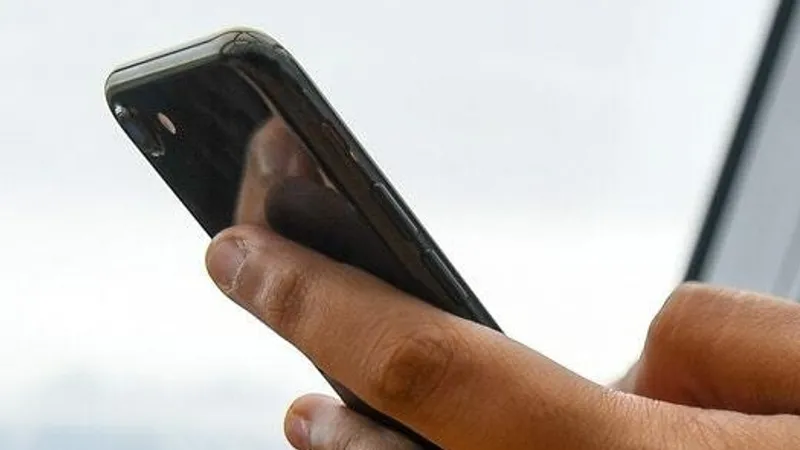Add, remove & assign phone numbers on demand
Manage, respond to, and share calls with your team
Send & receive any message you need to
Keep contact details in one place with a shared phonebook
For on-the-go teams to share messages, calls, and contacts
A full directory of all our included features

SMS for business: Getting your head around technical terms

SMS marketing is a great way that businesses can engage with their customers in a fast, personal way.
Text messaging is easy and delivers information in a neat and tidy package. However, there are several differences between personal and business text messages.
The lingo involved with SMS for business can also be very confusing, and learning it can be intimidating – but understanding all the terms associated with SMS for business means you can make the most of it.
We’ve put together a handy alphabetised list of common texting terminology, to get you talking texts in no time.
A2P messaging
A2P stands for application-to-person, which is a method of messaging from an online application to a user on a mobile phone. This differs from traditional texting, where the message is sent from mobile to mobile. A2P is very useful for sending broadcast SMS.
Alphanumeric sender ID
A sender ID is what your customers see when you send them a message. It is called ‘alphanumeric’ because it can be a combination of numbers and letters — whichever ones you choose. However, in this setting, messaging is only one-way and customers can’t reply. Alphanumeric sender IDs also only work in supported countries.
Binary messages
Since SMS has a short character limit, binary messages encode text as binary characters, or bytes. This helps to get around the limit and means that you can send images and even ringtones via a binary SMS gateway. Some languages like Arabic, Chinese, Korean and Russian need specific characters in binary messages.
Concatenated messages
Similar to binary messages (above) this is another method to overcome the short character limit on SMS. This type of message is where a message is split up into smaller parts, sent as individual messages, then recombined when they reach the recipient’s phone. It requires additional info to be added to each message to identify and order each part of the message.
DLR (delivery report)
Some business SMS providers will supply delivery reports, which send you a report for every message sent out. However, different countries may have different accuracies when it comes to delivery reports, and there are several different types of delivery reports.
Fixed Sender ID
This is a numeric type of sender ID, which means it cannot include letters. You determine it in advance, and it can’t be changed based on the receiver’s specific needs. It is effectively the mobile number that your customer will see displayed on their phone.
Flash SMS
The flash message service lets you send a message that pops up on your recipient’s screen. This means that they don’t even need to open the message to read it!
International Mobile Subscriber Identity (IMSI)
A unique number associated with mobile phone users. It is a number stored in the SIM card and sent by phone to the network. This is for the networks (namely, GSM and UMTS) to keep track of their users.
Local timestamp
If an SMS received by your customer has a local timestamp, it means that it will display their local time, rather than your local time. This is an advantage for international service providers and organisations that need local time.
Mobile network operator (MNO)
This is a telephone company that has different services for their mobile subscribers. Examples are Vodafone, EE, O2 and Three.
Mobile number portability (MNP)
This is a service that means a person can keep their number even when they change mobile network operator. The MPN also provides service access to information on mobile number identity and verification.
Mobile station international subscriber directory number (MSISDN)
The number identifying a mobile number internationally. It is an identifier of a subscription to a mobile network (GSM or UMTS). It has a minimum length of 15 digits, includes a country code, and a national destination code by which a network operator can identify a subscriber.
MO SMS, (mobile-operated SMS)
An SMS that comes from the customer’s mobile phone and is delivered to your mobile phone or an application.
MT SMS, (mobile terminated SMS)
This essentially refers to text messages received by your customers.
HLR query/network query/number lookup
A central database consisting of mobile phone details where subscriptions are authorised to use the GSM core network. The number look up or network query is known as the HRL.
Person to application (P2A)
The sending of a mobile message from a mobile user to an application, like if a person were to reply to a message that you had sent them via an app.
Person-to-person (P2P) messaging
This is the most common type of text message, which is sent from a person’s mobile to another person’s mobile (e.g. personal texting, rather than business texting).
SMS aggregator
A mobile telecommunication company that has multiple agreements with MNOs to send and receive data from the operators.

Continue reading
Both business SMS and personal texting are useful for communicating with your customers. Learn how to use both to your advantage.
What is SMS texting and is it still relevant today? No matter how many texts you've sent, you might not know the answer. Check out our guide to find out!




